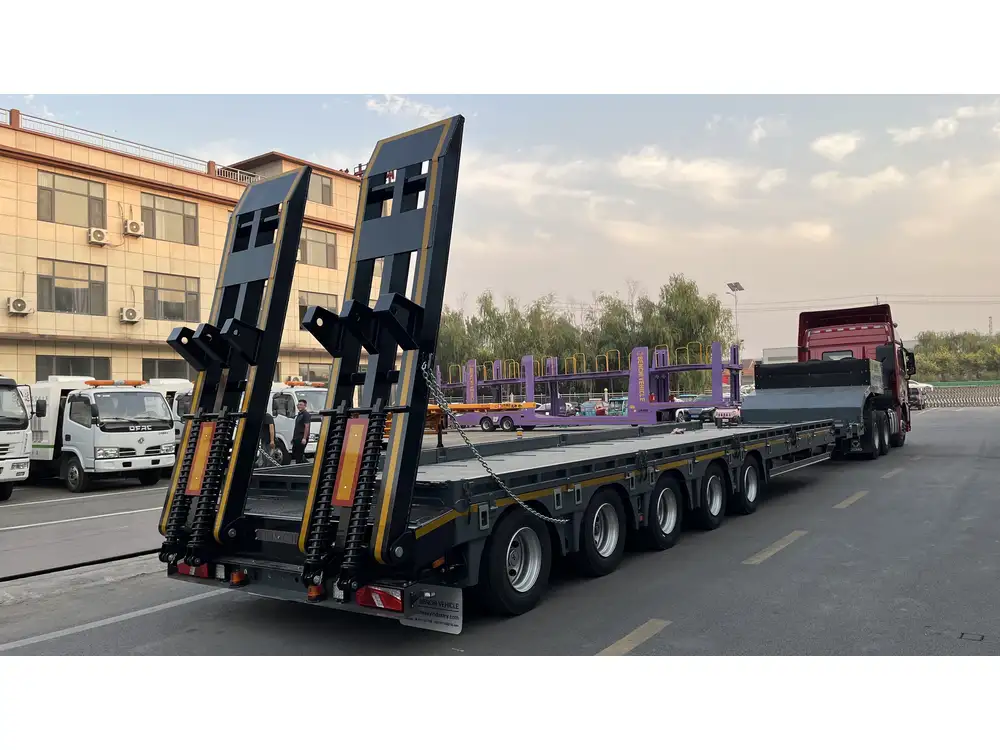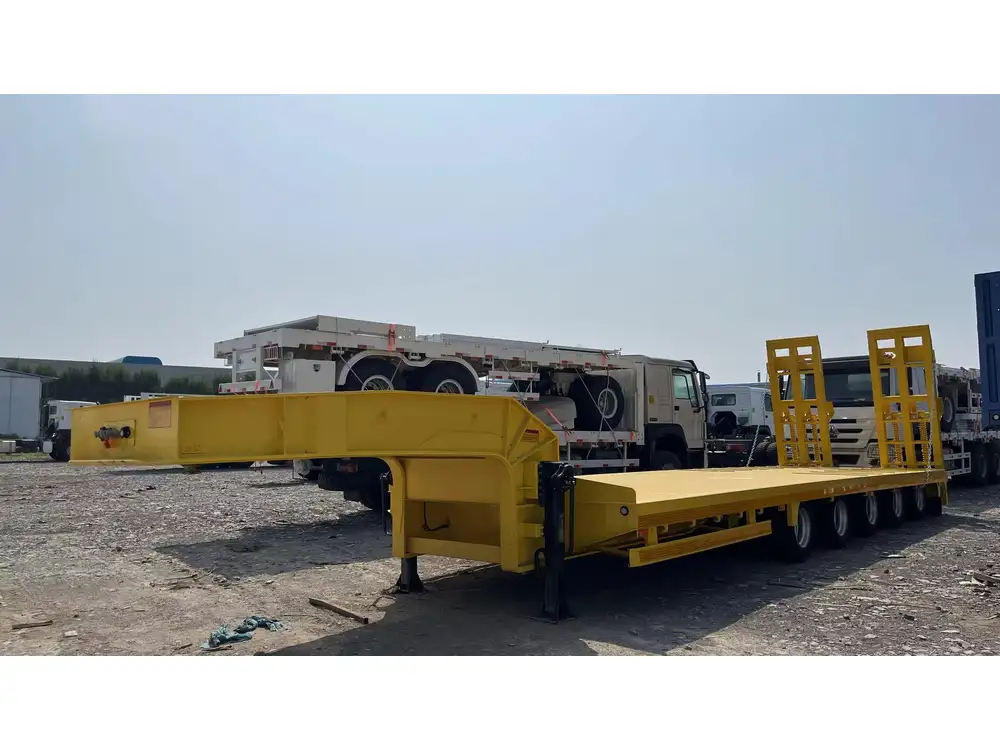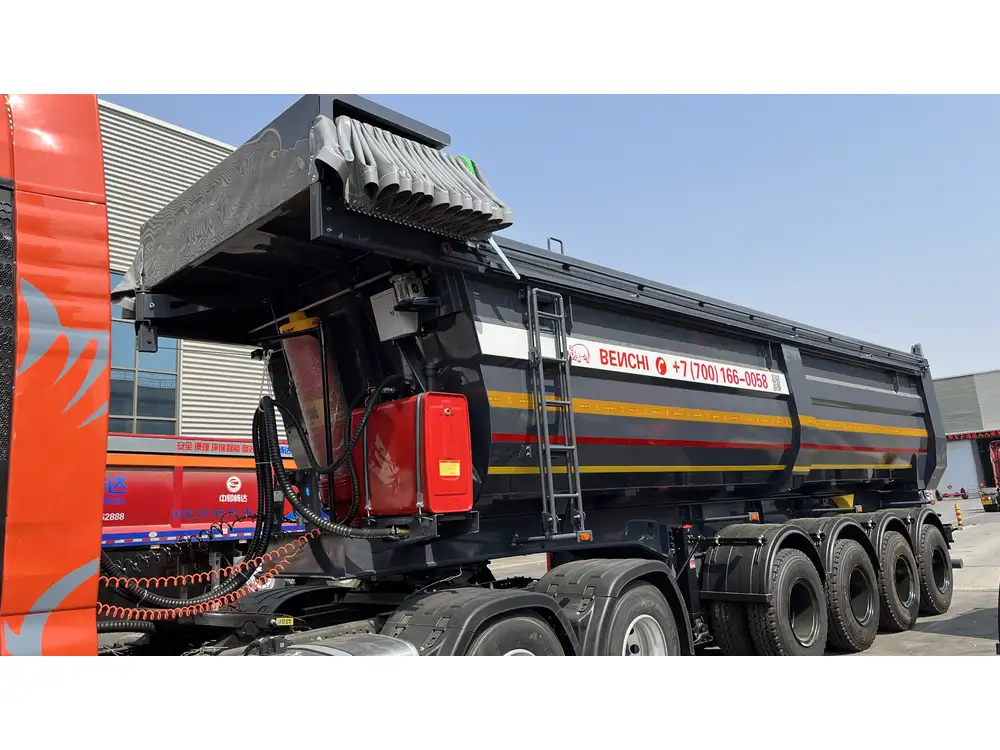When considering the robust engineering behind semi-trailer manufacturing, one of the significant focal points is the landing gear. Understanding how much weight a semi-trailer landing gear can hold is crucial not only for industry professionals but also for businesses reliant on transportation logistics. This detailed guide will dissect the weight capacities of semi-trailer landing gear, exploring various factors that influence their performance and providing insights into best practices for maximizing their effectiveness.
What Makes Up Semi-Trailer Landing Gear?
At the core, semi-trailer landing gear consists of several components that work in unison to support the trailer when it is not connected to a tractor unit. The principal parts include:
- Legs: The two vertical posts that extend and retract to raise or lower the trailer.
- Gearbox: Located at the top, it houses the mechanism that allows for the extension and retraction of the legs.
- Footpads: These provide a stable base on the ground, spreading the weight distribution to prevent sinking or tilting.
Types of Landing Gear
Not all landing gears are created equal. The following types stand out based on weight capacities and specific applications:
- Standard Landing Gear: Generally equipped with a weight capacity between 20,000 to 25,000 pounds. This type is commonly used in regular freight transport.
- Heavy-Duty Landing Gear: Designed for specialized operations, these can support up to 30,000 pounds or more, suitable for carrying heavier loads.
- Sliding Landing Gear: These allow for adjustable positioning along the semi-trailer, facilitating load distribution and maneuverability while maintaining a comparable weight capacity to standard systems.

What Factors Determine Landing Gear Weight Capacity?
To fully understand how much weight a semi-trailer landing gear can hold, various factors must be taken into account:
Material Strength
The construction material of the landing gear—often steel or aluminum—plays a pivotal role in its strength and durability. High-quality steel components typically offer superior weight support compared to lighter alternatives like aluminum.
Design Engineering
The design and structural integrity of the landing gear dictate its load-bearing capacity. Innovative designs may incorporate reinforcement features that enhance their strength without significantly increasing weight.

Load Distribution
Proper distribution of weight across the trailer can significantly impact the performance of landing gear. An unevenly placed load could exceed the landing gear’s capacity in some areas while underutilizing it in others.
Ground Conditions
The type of surface on which the landing gear rests can also affect its performance. Soften soil or uneven ground can reduce effective load capacity, leading to possible risks and complications.
Weight Capacity Guidelines: A Closer Look
Here is a comprehensive table illustrating the typical weight capacities of different landing gear types:
| Landing Gear Type | Weight Capacity | Common Applications |
|---|---|---|
| Standard Landing Gear | 20,000 – 25,000 lbs | General freight transport |
| Heavy-Duty Landing Gear | Up to 30,000 lbs | Transportation of heavy machinery |
| Sliding Landing Gear | 20,000 – 25,000 lbs | Flexible trailer load management |

Assessing and Maintaining Landing Gear Performance
Regular assessment and maintenance of landing gear are vital to ensure safety and optimize performance. Here’s how one can approach this:
Visual Inspection
Conduct thorough visual inspections of landing gear before and after each use. Look for signs of wear, corrosion, or structural failure. Pay special attention to:
- Cracks in the legs.
- Wear on the footpads.
- Overall condition of the gearbox.
Lubrication
Keeping mechanical parts well-lubricated is essential for smooth operation. Regularly check the gearbox for sufficient lubricant and apply grease where necessary to ensure that the legs can extend and retract effortlessly.

Load Checks
Confirm that the load does not exceed the stipulated capacity. Proper documentation of weight before hauling is crucial. Using load gauges can aid in determining the weight directly on the landing gear to avoid exceeding limits.
Common Misconceptions about Landing Gear Weight Capacity
Despite its importance, several misconceptions prevail regarding the weight carrying capacity of semi-trailer landing gear. Addressing these can clarify operational practices:
Myth 1: All Landing Gears Have the Same Capacity
In reality, capacities can vary widely—depending on materials, design, and even manufacturer specifications. Businesses must obtain accurate load capacity information from manufacturers before putting landing gear into service.

Myth 2: Weight Capacity is Fixed
While manufacturers provide stated capacities, actual performance can change based on factors such as maintenance, age of the gear, and load distribution. Regular checks are advisable to ensure continued safety.
Myth 3: Ground Conditions Do Not Matter
Ground conditions can drastically affect the performance of landing gear. Sinking or tilting can occur on soft or uneven terrain, leading to potential failure. Therefore, assess surfaces where the trailer will be parked or loaded.
Legal Considerations and Compliance
It’s essential for operators to be aware of laws and regulations governing weight limits for semi-trailers and their components. Compliance with these regulations can help avoid legal repercussions and ensure safety standards are met:
- State Regulations: Vary by region and may impose additional weight limitations.
- Manufacturer Guidelines: Always refer to the manufacturer’s specifications for permissible limits.
- Safety Standards: Ensure adherence to safety compliance standards, such as those set forth by the Federal Motor Carrier Safety Administration (FMCSA).

Enhancing Semi-Trailer Efficiency Beyond Weight Capacity
Maximizing the efficiency of semi-trailers goes beyond merely understanding the load capacities of landing gear. Several additional practices can lead to improved operational performance:
Training and Awareness
Regular training for operators regarding the proper use and care of landing gear is vital. Understanding how to safely lower and raise gear, as well as maintain proper loads, can prevent accidents and extend equipment lifespan.
Technology Integration
Investing in technology, such as load monitoring systems and telemetry, can provide real-time data on the load being carried and alert operators to potential overloading issues before they become hazardous.

Planning Loads Strategically
Strategic load planning can enhance weight distribution on trailers, ensuring even placement across the landing gear. Using software to optimize load configuration can not only improve performance but also enhance operational costs significantly.
Conclusion
Understanding the weight capacity of semi-trailer landing gear is paramount for safety, compliance, and operational efficiency within logistics and transportation industries. By recognizing the inherent factors that influence this capacity—such as material strength, design engineering, and ground conditions—operators can make informed decisions to ensure optimal function. Furthermore, proactive measures in maintenance, training, and the application of modern technologies can significantly enhance safety and operational performance, reflecting the intricate balance between robust design and practical application.
This comprehensive analysis serves as a foundational resource for businesses and individuals invested in the semi-trailer industry, providing the insights needed to navigate the complexities of load capacities and landing gear effectively.



